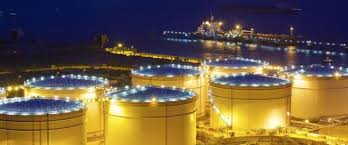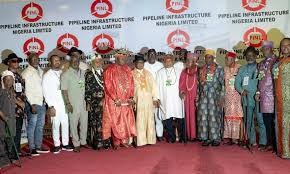Oil & Energy
NERC’s APMI Scheme And Core Investors
Nigerians have been as sured of an improved power supply, following the privatisation of the Power Holding Company of Nigeria (PHCN).
The director general of the Bureau of Public Enterprises (BPE), Mr. Benjamin Dikki, in a statement signed by the Head of Public Communication, Chigbo Anichebe, said that the introduction of sound maintenance culture when the private investors take over, would ensure that the current installed capacity of 6000 mega watts was exploited and put on the national grid. He said that, that alone would stabilise power supply in the country.
Dikki therefore appealed to Nigerians to give the investors ample time to increase capacity as “they, (the investors) would after take over, retool and bring in new machinery like turbines which are not easily bought off the shelf to put power on proper footing”.
According to the BPE director general, the investors would need time to re-tool after take over, between a period of two to three years to bring in the required machinery after which the country would witness increased and steady power supply.
He also allayed the fears of monopoly by the investors as the necessary frame work and institutional checks had been put in place to regulate their activities and ensure appropriate pricing.
This is just one amidst the numerous assurances for improved power supply given by the authority to Nigerians. But there seems to be a snag somewhere especially in the aspect of the order by the Nigerian Electricity Regulatory Commission (NERC) directing all the Electricity Distribution Companies to commence the implementation of a new metering scheme known as Credited Advance Payment for Metering Implementation (CAPMI).
According to NERC CAPMI’s objectives are reduction of the large number of un-metered customers, the elimination of the abuse of estimated billing, improvement of revenue collection and reduction of commercial losses.
NERC describing the scheme as a new accelerated scheme for electricity meter deployment, said it was necessary because of the high level of complaints from customers and dissatisfaction with the current estimated billing practices.
Under CAPMI scheme willing customers would be required to advance the cost of the meter and associated installation cost approved by the NERC. It assured that within 45 days of advanced payment by customers, the meter of which type is dependent on the amount paid by the customer, would be installed.
NERC’s order for immediate implementation of CAPMI implies that the acquisition and implementation of the CAPMI scheme is to be carried out by the present management of DISCOS. The type, design and features of the meters are to be determined by the present DISCOS. The CAPMI core message by NERC reads partly.
“Under the CAPMI scheme, customers who are willing to participate will be required to advance the cost of the meter and associated costs approved by NERC. Once the money is advanced, the customer will get a meter installed within 45 days of payment.
The amount to be paid by the customer will depend on the type of meter installed. No profit shall be made by the DISCO in the supply of the meters”. These are some of the mandates issued by NERC to be carried out by DISCOS so what happens when the actual investors take over? How can these be reconciled? What if the designs, types and features of the meters do not meet the expectation of the new investors? Who will then bear the brunt? Metering no doubt is fundamental to the collection of revenue and protection. It is to a large extent key to the anticipated stable power supply. But where this is handed over to the same managers whose ineptitude in the management of the distribution facilities leaves much to be desired what happens?
The inability to account for the energy got from the national grid and the losses in the power sector took place under the watch of the same DISCOS that have been asked to implement the CAPMI scheme. So how will the desired change in the power sector come to be?
According to a power expert, the would-be investors should be able to determine what type of technology the meter should be made of and the upgrading cost. The technology choice with existing facilities would create a room for smooth integration.
He argued that it would be in the best interest of the sector if the expected target was to be achieved, to allow the new investors to decide what type and quality of meters to be installed in their respective distribution zones pointing out that this would make them to be more responsible to it thus resulting in efficiency in its management.
He explained further that ordering for immediate implementation of the CAPMI scheme by the present DISCOS was more like making investment decisions for the new investors and this cannot allow for free market operation which privatisation was targeted at.
Allowing the new investors to make decisions as to the types of meter to be installed, the way it should be installed among others, he opined, would not only protect the new investors revenues which is paramount to them but would be favourable to electricity consumption and enhance efficiency thus resulting in improved power supply.
Oil & Energy
Reps Launches Probe Into N200bn CBN Loan To DISCOs
The House of Representatives has launched an investigation into the disbursement and utilisation of the N200billion Central Bank of Nigeria (CBN) loan allocated for the National Mass Metering Programme (NMMP) to Electricity Distribution Companies (DISCOs).
Chairman, House Committee on Public Assets, Rep. Uchenna Okonkwo, disclosed this in a statement in Abuja.
He confirmed that a 19-member sub-committee had been inaugurated to probe the matter thoroughly.
Okonkwo recalled that the NMMP, initiated in 2020, was designed to provide free electricity meters to Nigerian consumers through the Licensed Electricity Distribution Companies (DISCOs).
He said the programme was a joint initiative of the CBN, the Nigerian Electricity Regulatory Commission (NERC), and other stakeholders in the Nigerian Electricity Supply Industry (NESI), aimed at eliminating estimated billing, improve transparency in energy usage, and enhance customer satisfaction.
Speaking on the launch of the NMMP, the Rep said the programme was to be implemented in three phases to ensure the reduction of collection losses and improve market remittances in the industry.
“Under the pilot phase of the programme’s implementation, CBN commenced with the sum of N59.280 billion for procurement and installation of one million meters in 2020 at an interest rate of 9 per cent after a two year moratorium.
“Preliminary research on the NMMP has shown that instead of the pronounced amount of N59.280 billion naira for the phase 0, what was released was N55.4 billion for procurement and installation of 962,832 meters instead of one million meters pronounced by CBN”, he noted.
Okonkwo stated futher that concerns have been raised regarding repayment, with the committee noting discrepancies in the repayment of the funds by the DISCOs.
According to Okonkwo, “Research has also shown that the eleven Electricity Distribution Companies who received the loan have paid back to CBN as refund for the N54.4 billion they received in 2020 without mentioning the 9 per cent interest on the loan.”
The lawmaker, however, said the subsequent phases of the programme, which were expected to significantly expand metering across the country, have stalled, explaining that Phase 1, which was to be funded by the CBN and Deposit Money Banks (DMBs) for 1.5 million meters, and Phase 2, expected to be financed by the World Bank for four million meters, are yet to take off.
He said the House, exercising its constitutional powers under Sections 88(1) and (2) of the 1999 Constitution, resolved to investigate the matter with a view to safeguarding public interest.
According to him, the sub-committee is expected to scrutinise all aspects of the NMMP funding, from disbursement and meter procurement to distribution and repayment mechanisms.
The 19-member committee comprises Reps. Obed Shehu, Ali Shettima, Abel Fuah, Salisu Koko, Ahmed Munir, Sani Umar Bala, Gbefwi Jonathan, Abdulmaleek Danga, Chinedu Obika, and Okunlola Lanre.
Others include Reps. Abass Adekunle, Akinosi Akanni, Obuzor Victor, Peter Akpanke, Ngozi Lawrence, Ogah Amobi Godwin and Ikeagwuonu Onyinye.
It would be noted that the NMMP was expected to be a game-changer in Nigeria’s power sector by reducing estimated billing, enhancing energy accountability, and restoring consumer trust.
However, the current revelations point to implementation failures and possible mismanagement of public funds.
Analysts believe that the outcome of the House probe could lead to reforms in electricity metering policy and strengthen regulatory oversight of loan disbursements to DISCOs.
Oil & Energy
“Renaissance Energy, NNPC JV Donate ICU Equipment To RSUTH

Renaissance Africa Energy Company Limited and its joint venture partners, including the Nigerian National Petroleum Company Limited (NNPC), have donated vital medical equipment and essential drugs to the Intensive Care Unit (ICU) of the Rivers State University Teaching Hospital (RSUTH).
Among the equipment are three ventilators, a laser therapy machine, as well as significant supply of seed stock drugs targeted at enhancing the hospital’s capacity to provide critical care and ensuring consistent drug availability.
Speaking at the Handover Ceremony at Renaissance Energy Headquarters, in Port Harcourt, the General Manager, Relations and Sustainable Development, Renaissance Africa Energy, Igo Weli, said, “The gesture by Renaissance and our partners is to enhance the capacity of the hospital to provide critical care to patients in need; improve the training of upcoming healthcare personnel; and provide support to dedicated healthcare professionals in their mission to save lives and improve patient outcomes.”
The Chief Upstream Investment Officer, NNPC, Oluwaseyi Omotowa, noted that the donations were part of a broader social intervention strategy of the Renaissance-operated joint venture.
Omotowa, who was represented by the Lead, Stakeholder Relations, NNPC Upstream Investment Management Services, Mrs. Uzo Ejidoh, further said “the JV has a deliberate corporate social responsibility strategy to serve the people.
“This is an unchanging commitment, hence our steadfast support and investment in social impact projects for the healthcare sector to continue to transform lives”.
Recieving the donations, the Chief Medical Director, RSUTH, Professor Chizindu Alikor, stated that the hospital was committed to the delivery of excellent healthcare along with research and training.
Alikor said, “The teaching hospital is on an upward trajectory. The ICU facilities were over stretched, and we are excited that our request to Renaissance and its partners for assistance was granted.
The CMD expressed the hospital’s confidence in Renaissance’s capacity and people-centric interventions, especially as it concerns Corporate Social Responsibility (CSR) in the health space.
By: Lady Godknows Ogbulu
Oil & Energy
Tight Now, Loose Later: Oil Futures Flash Warning

Last week, OPEC+ announced it will once again accelerate the pace of unwinding of production cuts, with output targets for June increasing by 411,000 barrels per day, equivalent to three monthly increments.
This follows a similar move in April, with the organization appearing willing to stay the course amid low oil prices and fears of weakening demand.
We reported that global crude inventories remain low enough, thus giving OPEC+ a window to scale back its voluntary cuts until the market surplus finally arrives.
Saudi Arabia appears intent on “punishing” OPEC+ rascals such as Kazakhstan and Iran for repeatedly violating their quotas.
Commodity analysts at Standard Chartered have reported that the latest OPEC survey of secondary sources reveals that Kazakhstan’s crude oil output clocked in at 1.852 mb/d in March, 384 kb/d above its OPEC+ quota.
Further, the country also failed to keep its promise to cut 38 kb/d in compensation for overproduction in March, bringing its total overproduction to 422 kb/d.
The same scenario is expected to unfold in the coming months. Kazakhstan produced 240 kb/d more y/y in March, a sharp contrast from the other eight OPEC+ members who produced a combined 612 kb/d less.
And now, the oil futures markets are sending a dire warning that oil bulls could find themselves in trouble quite soon due to a combination of the OPEC+ output hike and Trump’s tariffs.
Oil futures curve has formed a rare “smile” shape, a structure Morgan Stanley says was last seen briefly in February 2020 just before the infamous oil price crash.
On Wednesday, Brent futures’ July contract was trading at a premium of 74 cents to the October contract, a market structure known as backwardation, foreshadowing immediate tight supply.
However, prompt prices from November have formed a contango, with forward prices flipping to a discount, indicating oversupply as traders predict Trump’s tariffs will eventually weaken oil demand. Having backwardation and contango together leads to the rare “smile” shaped curve.
According to the latest available data by the International Energy Agency (IEA), global oil inventories stood at 7.647 billion barrels in February, down from 7.709 billion barrels for last year’s corresponding period and close to the bottom of their historical five-year range.
Meanwhile, refiners’ appetite for crude is climbing ahead of the peak driving season in July and August, “Refinery maintenance in the Atlantic basin will start to taper off, increasing oil demand (for refining)… Summer driving should provide some support,” BNP Paribas analyst told Reuters.
Global oil demand is expected to rise by 1.3 million barrels per day in the third quarter of the current year, up from an average of 104.51 million bpd in the second quarter, the IEA has predicted.
The 1 million bpd output increases announced by OPEC+ so far, coupled with another 400 kb/d increase in July, almost matches the predicted demand increase, implying oil markets will not face a surplus till late in the year.
Meanwhile, oil prices jumped in Thursday’s session after the Trump administration announced it has struck a trade deal with the UK. Brent crude for July delivery was up 2.7% to trade at $62.75/bbl at 12.50 pm ET while WTI crude contract for June delivery added 3.0% to change hands at $59.86 per barrel. However, terms of the deal appear to fall well short of the “comprehensive” package Trump earlier touted.
According to Trump, UK Prime Minister, Keir Starmer, will further reduce non-tariff barriers and fast-track U.S. goods into his country.
Meanwhile, another solid week of jobless claims underscored the Federal Reserve’s ongoing unwillingness to cut rates. U.S. jobless claims fell 13,000 to 228,000 for the period ending on May 3.
Continued claims, however, clocked in at just over 1.9 million, near the highest levels since 2021, suggesting workers are still finding it difficult to secure new jobs as the economy stalls.
That said, commodity analysts at Standard Chartered have predicted that path of least resistance for oil prices is lower in the coming months, with oil prices to remain low before beginning a gradual recovery later in the year as U.S. oil output declines.
StanChart, however, says there’s some technical support in the short-term, with fundamentals remaining fairly positive. Recently, StanChart cut its 2025 oil price forecast to $61/bbl from $76 and also lowered its 2026 forecast to USD 78/bbl from $85 citing Trump’s tariffs.
By: Alex Kimani
-

 Sports12 hours ago
Sports12 hours ago“Remo Ladies will win every NWFL Super Six match”
-

 Business5 hours ago
Business5 hours agoNCDMB, Partners Sweetcrude On Inaugural Nigerian Content Awards
-

 News6 hours ago
News6 hours agoEleme Indigenes Hail Council Boss Over Evacuation Of Refuse
-

 News12 hours ago
News12 hours agoOver 80 Army captains to sit for 2025 promotion exam in Benin
-

 Politics5 hours ago
Politics5 hours agoLP Crisis, Poetic Justice For Betrayal – Ex-presidential Aspirant
-

 Sports12 hours ago
Sports12 hours agoAfroBasket: D’Tigers To Play Against Tunisia, Cameroon, Madagascar
-

 Oil & Energy5 hours ago
Oil & Energy5 hours agoStakeholders Laud PINL For Oil Pipeline Safety
-

 News6 hours ago
News6 hours agoHYPREP Commits To Prioritising Workers’ Welfare, Job Creation

